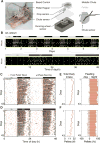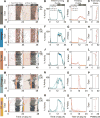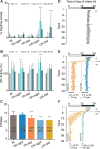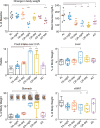Mice under Caloric Restriction Self-Impose a Temporal Restriction of Food Intake as Revealed by an Automated Feeder System
- PMID: 28683292
- PMCID: PMC5576447
- DOI: 10.1016/j.cmet.2017.06.007
Mice under Caloric Restriction Self-Impose a Temporal Restriction of Food Intake as Revealed by an Automated Feeder System
Abstract
Caloric restriction (CR) extends lifespan in mammals, yet the mechanisms underlying its beneficial effects remain unknown. The manner in which CR has been implemented in longevity experiments is variable, with both timing and frequency of meals constrained by work schedules. It is commonplace to find that nocturnal rodents are fed during the daytime and meals are spaced out, introducing prolonged fasting intervals. Since implementation of feeding paradigms over the lifetime is logistically difficult, automation is critical, but existing systems are expensive and not amenable to scale. We have developed a system that controls duration, amount, and timing of food availability and records feeding and voluntary wheel-running activity in mice. Using this system, mice were exposed to temporal or caloric restriction protocols. Mice under CR self-imposed a temporal component by consolidating food intake and unexpectedly increasing wheel-running activity during the rest phase, revealing previously unrecognized relationships among feeding, metabolism, and behavior.
Keywords: alternate day feeding; automated feeder system; body weight; caloric restriction; circadian rhythm; feeding pattern; intermittent fasting; mouse; temporal restriction; wheel-running activity.
Copyright © 2017 Elsevier Inc. All rights reserved.
Figures





References
-
- Anson RM, Guo Z, de Cabo R, Iyun T, Rios M, Hagepanos A, Ingram DK, Lane MA, Mattson MP. Intermittent fasting dissociates beneficial effects of dietary restriction on glucose metabolism and neuronal resistance to injury from calorie intake. Proc Natl Acad Sci U S A. 2003;100:6216–6220. - PMC - PubMed
MeSH terms
Substances
Grants and funding
LinkOut - more resources
Full Text Sources
Other Literature Sources

